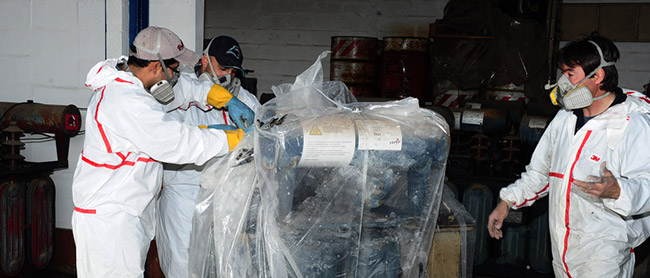During the second week in April, 130 tons of hazardous waste produced by Uruguayan bodies such as UTE, OSE, BHU and Fanapel will be loaded for transport to Europe. DINAMA has further plans for a second such shipment, containing obsolete pesticides currently in stock at MSP, ASSE, INIA and the Piñeyro del Campo Hospital. The waste will be transported to Europe for treatment under international conventions ratified by Uruguay.
Materials containing polychlorinated biphenyls (PCBs) will be sent to a site in Asturias, Spain, which decontaminates used power transformers, soil, and liquids. The resulting fluids will then be transported onward to France for incineration, keeping environmental impacts to an absolute minimum. Meanwhile, the pesticides will be shipped from Spain to Germany for treatment.
The waste materials are currently being loaded into containers at UTE’s Peñarol logistics center; subsequent work will be conducted at UTE general workshops and the Montevideo station.
National Environment (DINAMA) Director Jorge Rucks explained that DINAMA’s project for safe PCB management will use this shipment as an opportunity for companies to dispose of other persistent organic pollutants, such as expired agricultural chemicals.
The only viable way of disposing of this waste is to export it to countries with approved decontamination and treatment technology – a standard practice among countries that lack the necessary infrastructure for domestic disposal.
These hazardous waste shipments are controlled and regulated under the Basel Convention, which ensures that all movements are conducted with extremely strict safety standards.
The total costs for this shipment will amount to approximately USD500,000, 72% of which will be financed by the Global Environment Facility. The remaining 28% will be paid by the Uruguayan government, from the MVOTMA and UTE budgets.


